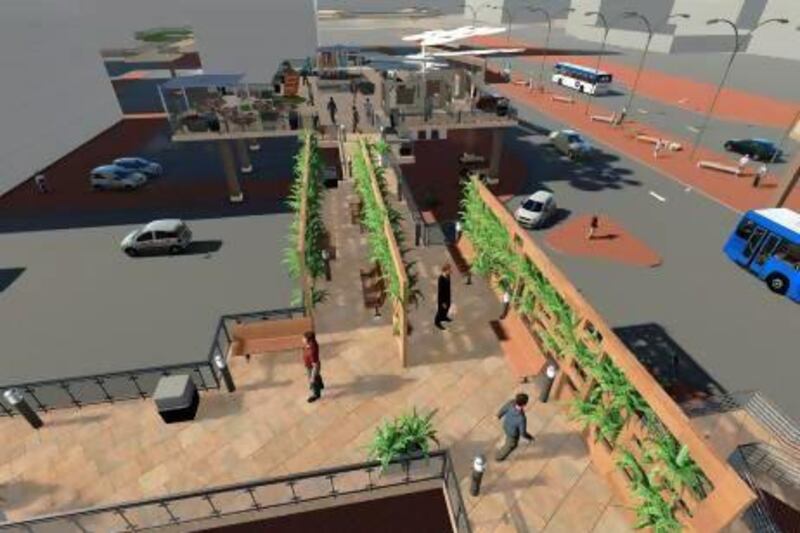AL AIN // Dr Pascal Menoret was struck by how friendly Abu Dhabi was to pedestrians when he first explored the city.
He was also surprised by how few people shared his impression.
Dr Menoret, professor of Arab Crossroads Studies at NYU Abu Dhabi, insists there is "nothing like seeing a city from the third or fourth floor to realise what a beautiful, complex and fragile environment it is".
"I wanted to find a way to reconcile frustrated pedestrians with a city that I found fascinating to explore on foot," he said.
"Seeing Abu Dhabi from the pedestrian bridges gives you that sense of both detachment and attachment. You float around. You can slow down, look up, look down, linger."
That sparked an idea that Dr Menoret shared with Yasser Elsheshtawy, professor of architecture at UAE University in Al Ain. Why not take advantage of the many pedestrian bridges by connecting them on a raised path, like the New York High Line, or the coulee verte in Paris?
Such a walkway would allow pedestrians to rediscover the city and could increase property values, develop new and mixed uses for existing space, beautify and shade the city, and create a public space for social interaction.
Dr Elsheshtawy presented the idea to his architecture students Fatima Al Ketbi, Khadija Al Sawafi, Maitha Al Mansouri and Mooza Rejalil, who worked with him and Dr Madhar Haddad, professor of structural engineering at UAEU.
Ms Al Mansouri said her team wanted to encourage pedestrians and create a lasting landmark in Abu Dhabi that could be used, not just looked at.
"There is a huge urban block in Abu Dhabi without activities, facilities, parking or green area," said Ms Al Sawafi.
"There is no life for the community. It's just like a machine. There is no life, no colour, no fun in the place. The people on the high line will feel that there is something different. They will see the buildings, see the people, see the view. It's dynamic, a new experience.
"I walk on the street and see the building in my eye level, but what if I stand five metres above and see how the street is?"
The proposed site is in the Tourist Club area between Abu Dhabi Mall, the Abu Dhabi Co-op and Le Meridian Hotel, and would cover about 2,000 square metres.
The height of the main area would be 4.5 metres but four footbridges incorporated would stay as they are.
The planners say the Green Line would entice people on to the streets, developing a culture of pedestrians, social interaction and appreciation of the city's beauty.
The walkway would also lend a sense of permanence to a constantly redeveloping city centre.
As their final graduation project, the students researched structure and carried out analyses on climate and shading to ensure the Green Line would be welcoming all year.
Incorporating the ideas of the urban theorist Jane Jacobs, the four young women aimed to put "eyes on the street" and connect with the needs of the community.
The design includes a library, theatre and mosques among shops, restaurants, gardens and seating. "The final output went way beyond what I expected," Dr Elsheshtawy said.
Dr Menoret added: "Their design is both aesthetic and social, they found great ways to attract people while protecting social diversity.
"The Green Line must be attractive to all Abu Dhabians. It is the anti-mall, where everybody is welcome."
The architects, no longer students, plan to refine their design and take it to the Government.
"This is only the beginning," said Ms Al Mansouri.






